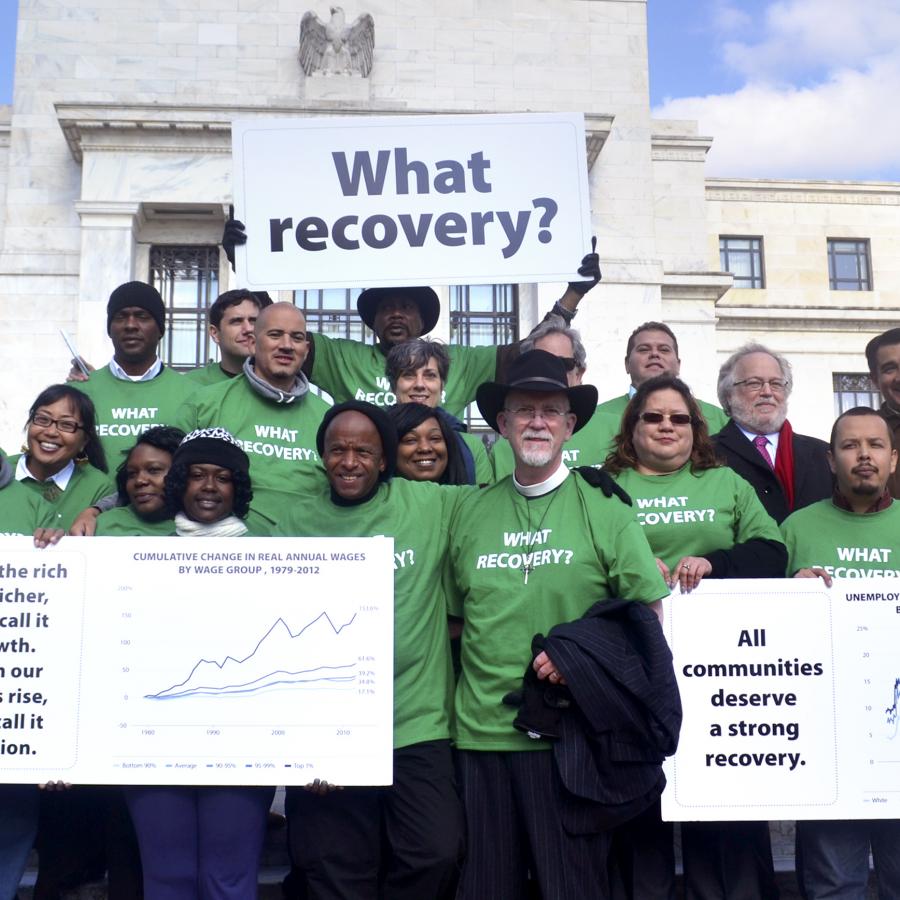Occupational segregation: All occupations and industries should be accessible to all workers.
Insights & Analyses
- Nationwide, workers of color account for about 39 percent of the workforce, but are underrepresented in many higher paying jobs such as legal occupations, the sciences, management, business operations, and finance.
- Women comprise nearly half (47 percent) of the workforce. They are critical to the healthcare system making up the vast majority of workers in healthcare support occupations (85 percent) and healthcare practitioners and technical occupations (75 percent). Women are also overrepresented in office and administrative support, personal care and service, and education instruction and library occupations.
- Immigrants make up just 17 percent of workers but account for 42 percent of workers in farming, fishing, and forestry occupations, and 34 percent of workers in building, grounds cleaning, and maintenance occupations.
- Looking at detailed occupations within an occupational group reveals further, and often starker patterns of segregation. For example, within healthcare support occupations, 70 percent of home health aides are people of color while about seven in ten physical therapist assistants and veterinary assistants are white.
Drivers of Inequity
Current-day patterns of occupational segregation in the United States are rooted in deep legacies of racist employment practices across the entire nation. The long-term employment of workers of color and immigrant workers in low-wage, low-quality jobs — factory work, mining, farming, domestic labor, and custodial and food services — is central to American labor history, as the social and political vulnerability of these workers made them easier to exploit. The concentration of people of color (particularly Black and Latinx workers) in more precarious industries is a practice that has persisted, even as the US economic base has shifted from agricultural to industrial to postindustrial over the past two centuries. Enduring patterns in educational inequity, along with exclusionary hiring and retention practices in some high-wage workplaces, continue to wall out many workers of color from lucrative sectors whose workforces have historically been predominantly white. A more equitable economy would have workforces in the best-compensated occupations reflect the broader population as a whole, as well as close the gaps in wages and amenities between the highest- and lowest-paying jobs.
Strategies
Grow an equitable economy: Policies to reach full employment for all
-
Invest in robust, disaggregated data collection and reporting systems and utilize granular insights on differential outcomes to drive systems change.
-
Grow new good jobs by making smart investments in infrastructure projects, supporting economic development strategies to grow high-opportunity industries, and helping entrepreneurs of color start and scale up their businesses.
-
Reduce employment barriers for people with records by "banning the box" — eliminating questions about conviction history on job applications (for private as well as public employers).
-
Connect unemployed and underemployed workers to the jobs created by new development through targeted local hiring, community workforce agreements, and community benefits agreements.
-
Protect the right of workers to organize labor unions.
-
Promote the development of worker-owned cooperatives.
-
Invest a portion of infrastructure investments in job training.
-
Implement sector-focused workforce training and placement programs and apprenticeships that create pathways to good jobs for workers with barriers to employment.
-
Invest in innovative training and credentialing models that democratize the economic benefits of a bachelor’s degree to a wider swath of the workforce, such as paid-on-the-job training and portable, stackable credentials and microcredentials to facilitate upward career transitions.
-
Enact strong language access policies requiring interpretation and translation services for English-language learners and facilitate naturalization among green card holders.
-
At the federal level, institute a federal jobs guarantee, dedicate 1 percent of infrastructure investments to a fund for inclusive job and contracting supports, set aside a share of public contracts for businesses owned by people of color to mirror area demographics, and ensure that recently incarcerated people receive essential identification documents to support job attainment.
Strategy in Action
Cross-sector partnership transforms health-care employment opportunities in Boston. Boston Healthcare Careers Consortium is a collaboration that convenes the workforce development sector, employers, training providers, and education institutions in healthcare to support job seekers and employees. The partnership facilitates real-time labor market information sharing and pathway development among stakeholders. The Healthcare Consortium in particular has grown to more than 50 active members since its inception in 2010, and it is nationally recognized for its employer-led model. In a 2019 informal survey, the Consortium’s participants shared that the learning and collaborative environment as well as networking opportunities cultivated additional training opportunities for workers. Read more.
Photo: Nappy on Unsplash

Resources
- Reports: Race and the Work of the Future: Advancing Workforce Equity in the United States; 10 Principles for a Federal Job Guarantee; Exploring Targeted Hire; Despite Continued Job Growth, Long-Term Unemployment Persists; Hiring Bias Black And Latino People Face Hasn't Improved In 25 Years
- Data:: Workforce Equity Dashboard; Opportunity Insights Economic Tracker (Low-Income Employment); Metro Monitor 2024; State of Working America; US Bureau of Labor Statistics Data Tools; Understanding Long-Term Employment



